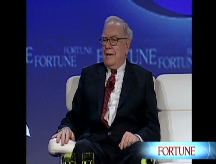Credit still tight after House OK's bailout
No relief for lending stranglehold, even as House sends bill to Bush. Treasurys rise as stocks sell off, on rumors of a rate cut.
NEW YORK (CNNMoney.com) -- Though a financial rescue plan was passed Friday, credit still remained tighter than ever.
The House voted in favor of the Treasury's $700 billion plan to buy up troubled assets from financial institutions. Those assets, mostly mortgage-related, have caused the credit markets to seize up.
The bill now goes to President Bush to sign into law.
But even with a rescue plan on the horizon that is designed to restore liquidity to the credit markets, banks still opted to hoard cash rather than lend to one another Friday.
Even if the bailout ultimately works to unlock credit markets, it would potentially take time. Institutions that sell their bad assets to the government could have to sell those securities at a huge discount, resulting in large writedowns. As a result, experts say it may be months after the legislation is enacted until banks start to see some relief.
"It will take some time for the markets to recover - this bill will not be an overnight cure," said Peter Cardillo, chief market economist with Avalon Partners.
Meanwhile, banks remained hesitant to take on more risky loans while dragging their anchors of their own troubled assets.
The 3-month Libor rate, or the London interbank offered rate, rose to 4.33%, up from 4.21% on Thursday, its highest level since January. The measure is a daily average of what banks charge other banks to lend money in London.
The difference between that measure and the Overnight Index Swaps rate rose to an all-time record 2.73 percentage points, up from 2.55 points Thursday, according to data reported by Bloomberg.com. The Libor-OIS "spread" measures how much cash is available for lending between banks, and is used by banks to determine lending rates. The bigger the spread, the less cash is available for lending.
Friday marked the sixth-straight record for the indicator, showing that banks are hoarding cash rather than lending to one another.
Historically, the typical Libor-OIS spread is about 0.11 percentage points, but it has averaged 1.66 points since the crisis began on Wall Street in mid-September, according to Merrill Lynch economist Drew Matus.
Another credit market indicator, the "TED spread," rose to yet another record high of 3.88 percentage points. The higher the spread, the more likely banks are risk averse. The TED spread was only 1.04 points on Sept. 5.
The TED spread measures the difference between 3-month Libor and the yield on the 3-month Treasury , considered by many investors to be the safest investment. The spread is a key indicator of banks' willingness to lend to one another.
With a wrench in the financial system's gears, many customers who need a loan to finance a home, car or tuition aren't able to get the credit they need. Others who can get a loan have to pay high interest rates. Frozen credit also affects companies' ability to make payroll, which can result in layoffs.
With credit tighter than ever, investors fear that the economy will continue to slump into a recession. Signs of a prolonged slowdown are evident. For instance, the U.S. Department of Labor is reported that the economy shed 159,000 jobs in September - the highest drop in employment since 2002.
"There's a growing unease about the recession," said Scott Anderson, senior economist with Wells Fargo. "It's pretty clear from the economic data from the past few days that the economic downturn has gotten worse in U.S. and globally."
As a result, banks and investors began to speculate that the Federal Reserve will cut its key funds rate by as much as a half of a percentage point to stimulate the economy.
The U.S. central bank uses its rate-cutting tool to encourage lending in an attempt to boost the economy. However, rate cuts tend to be inflationary, and bond investors worry that their assets will devalue over time as the dollar sinks.
"There is growing speculation that the Fed might cut rates," said Cardillo. "There's no inflation problem right now, but there may be down the road as the printing presses will be running at full speed."
The 2-year note, which fluctuates the most on rate changes, fell 2/32 to 100-12/32 and its yield rose to 1.66% from 1.63%. Bond prices and yields move in opposite directions.
Bond prices were down for the majority of the day Friday, as rumors of a rate cut took hold and stocks rose in anticipation of the House vote. But after the afternoon vote, the stock market refocused on the struggling economy and most Treasurys began to rise.
The benchmark 10-year note rose 2/32 to 103-1/32 and its yield held steady at 3.63%.
The "2-10 yield spread," or the difference between the 10-year and 2-year yields, fell to 1.97 percentage points from 2.02 points right before the bill was signed. That suggests a very slight easing of credit, as short term money is being made available at lower rates. But experts warned that it is way too early to declare victory for the credit markets.
"Spreads are coming down a little bit, but we have to wait and see how the plan works," Cardillo said. "It still won't be implemented for weeks."
The 30-year bond rose 21/32 to 106-18/32 and its yield fell to 4.12% from 4.15%.
The yield on the 3-month bill, which is considered by many to be the safest investment, fell to a measly 0.49% from 0.69% late Thursday.
"People just want good collateral because of the fear factor," Cardillo said. "They have no confidence in the credit markets." ![]()



